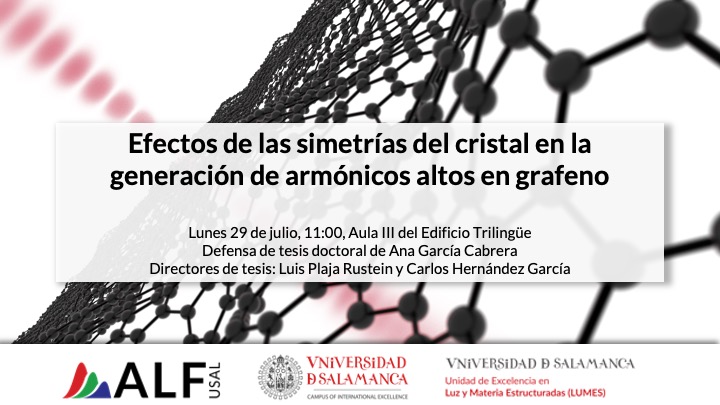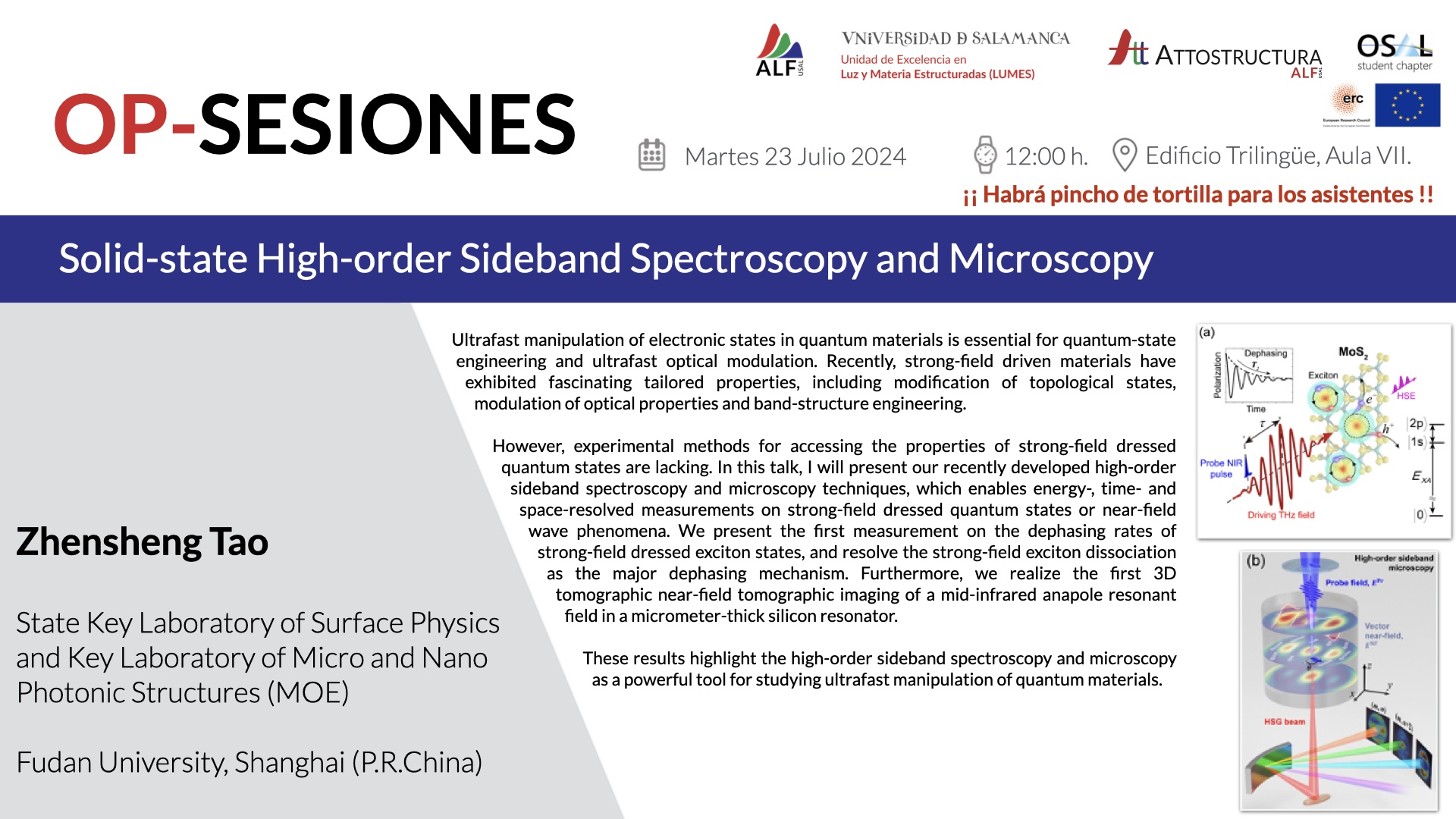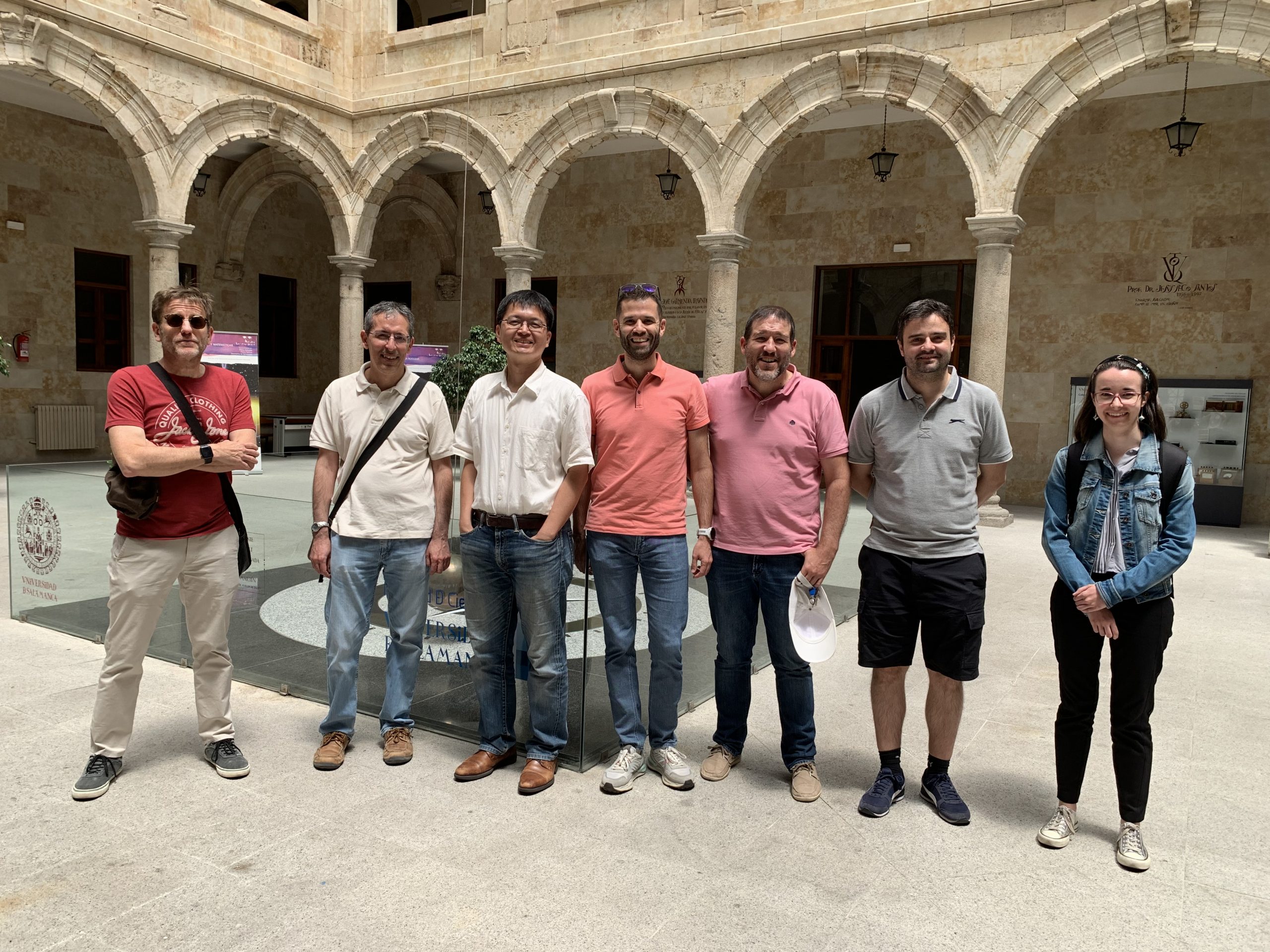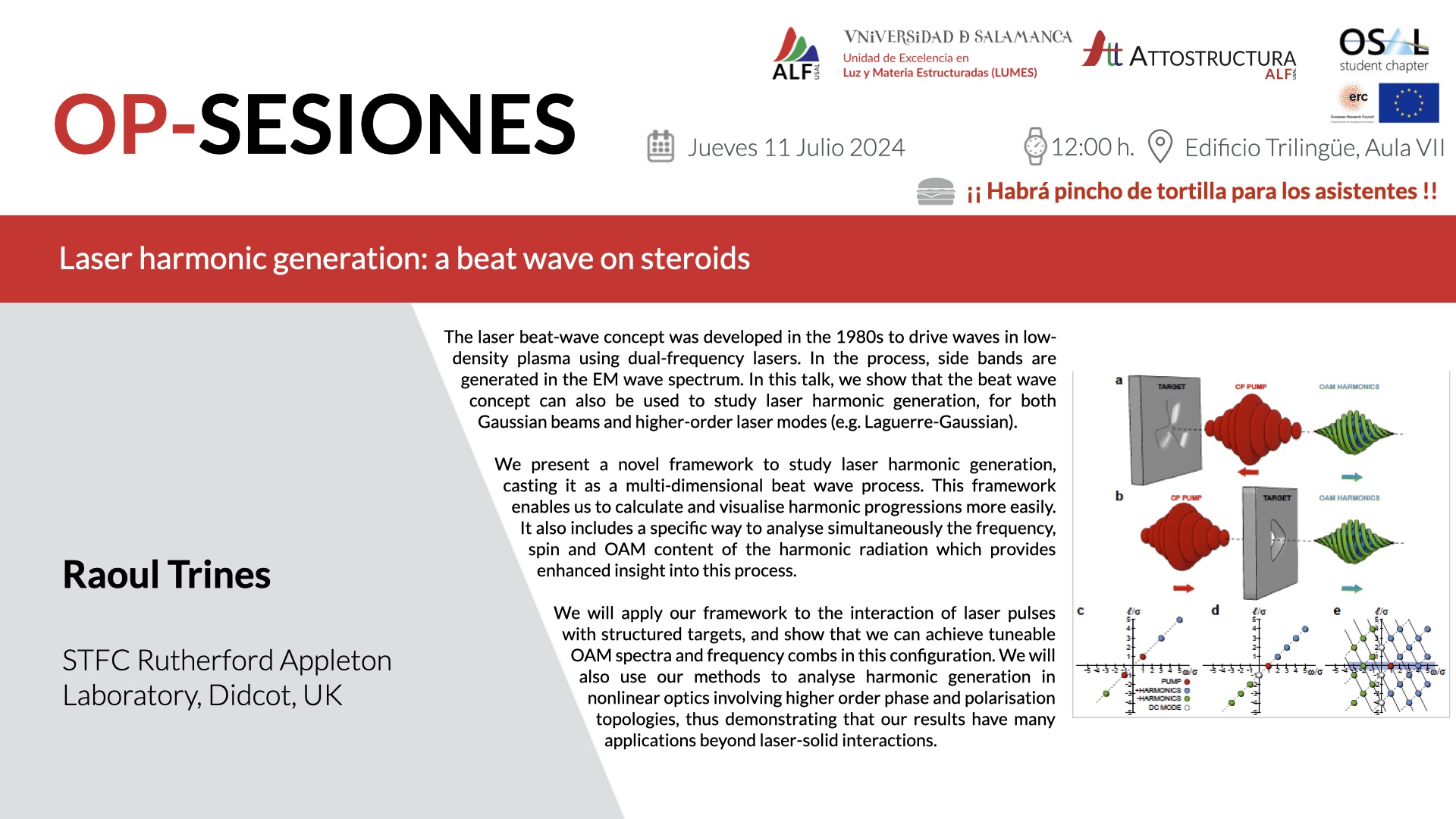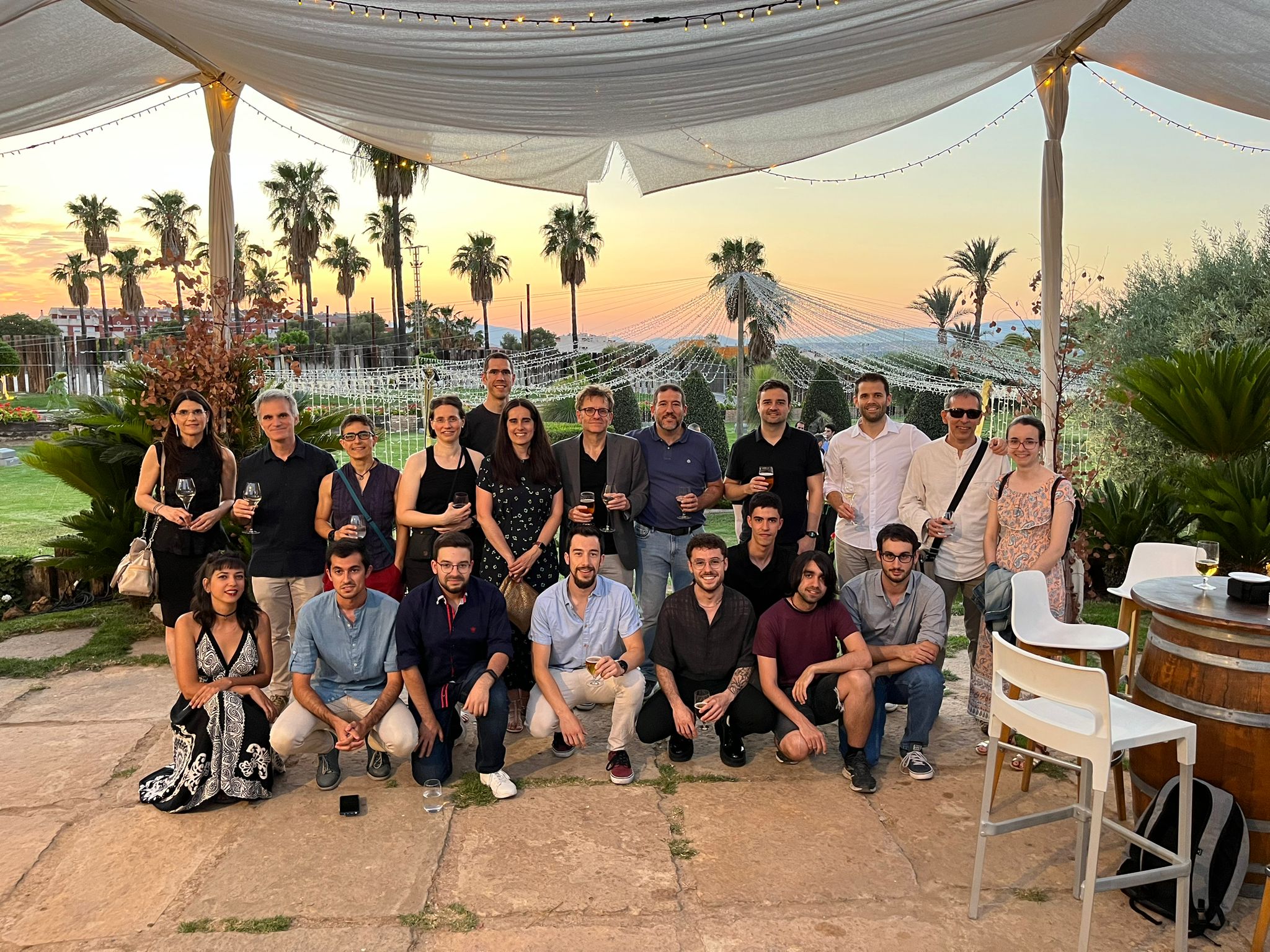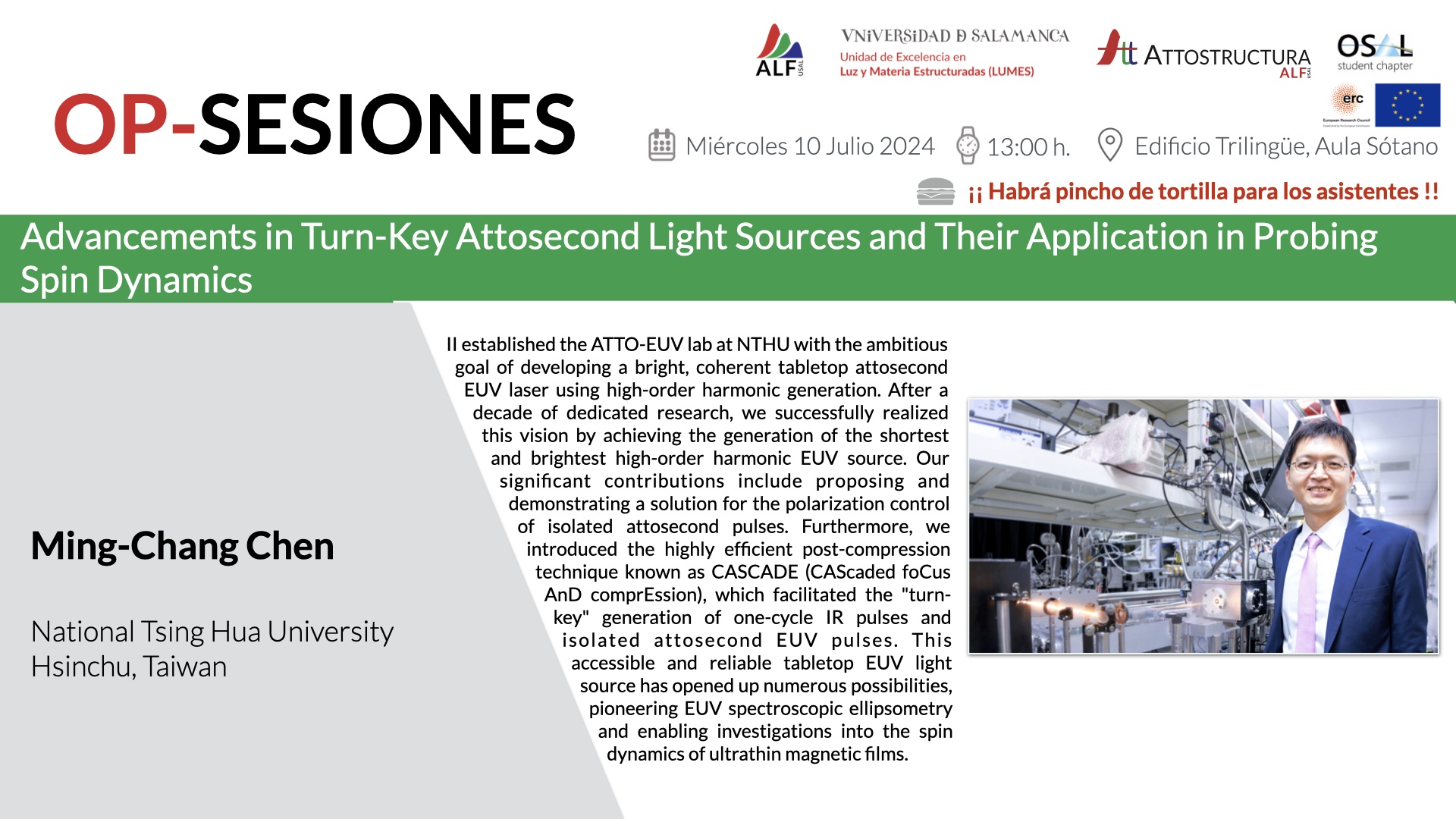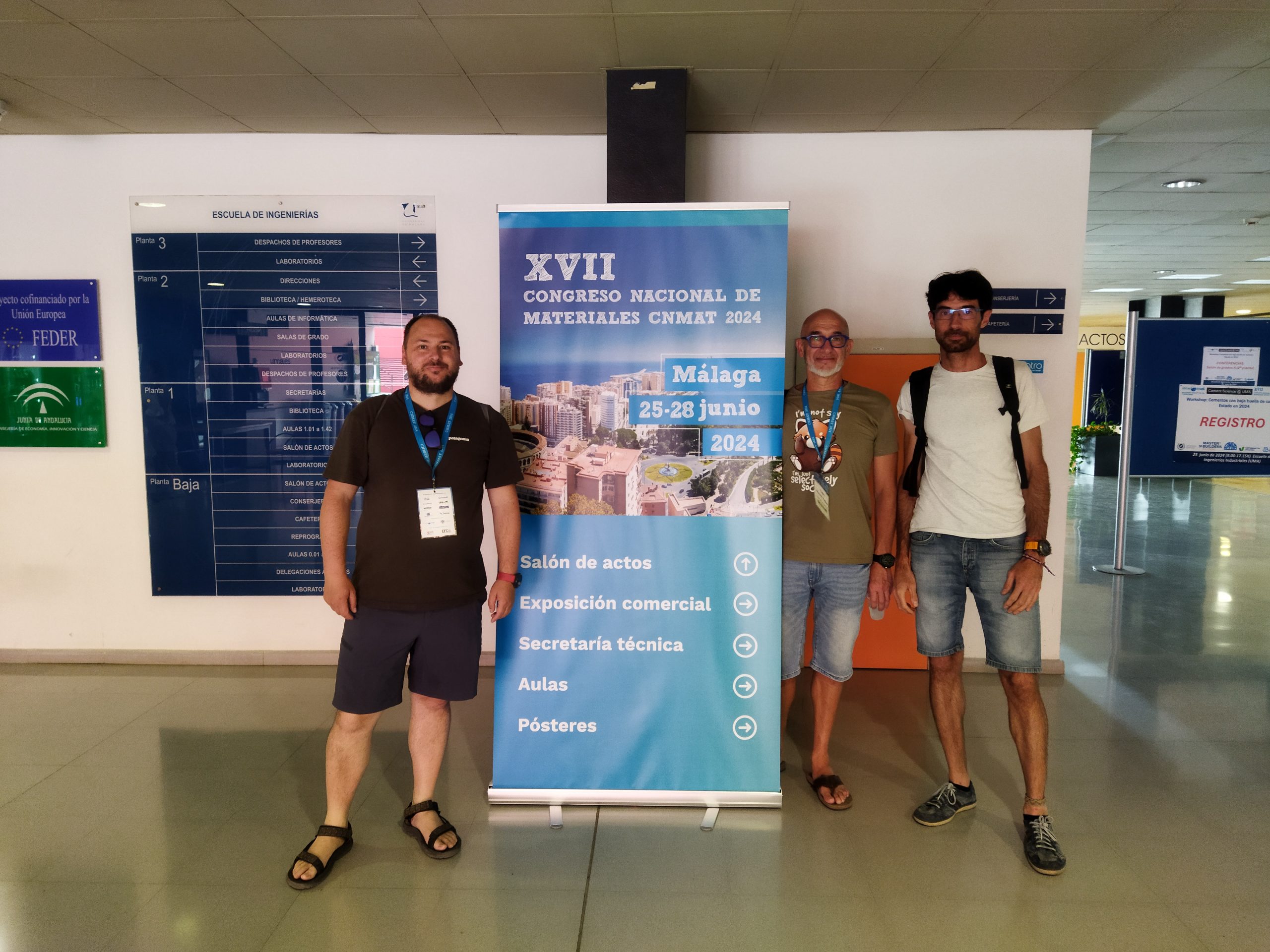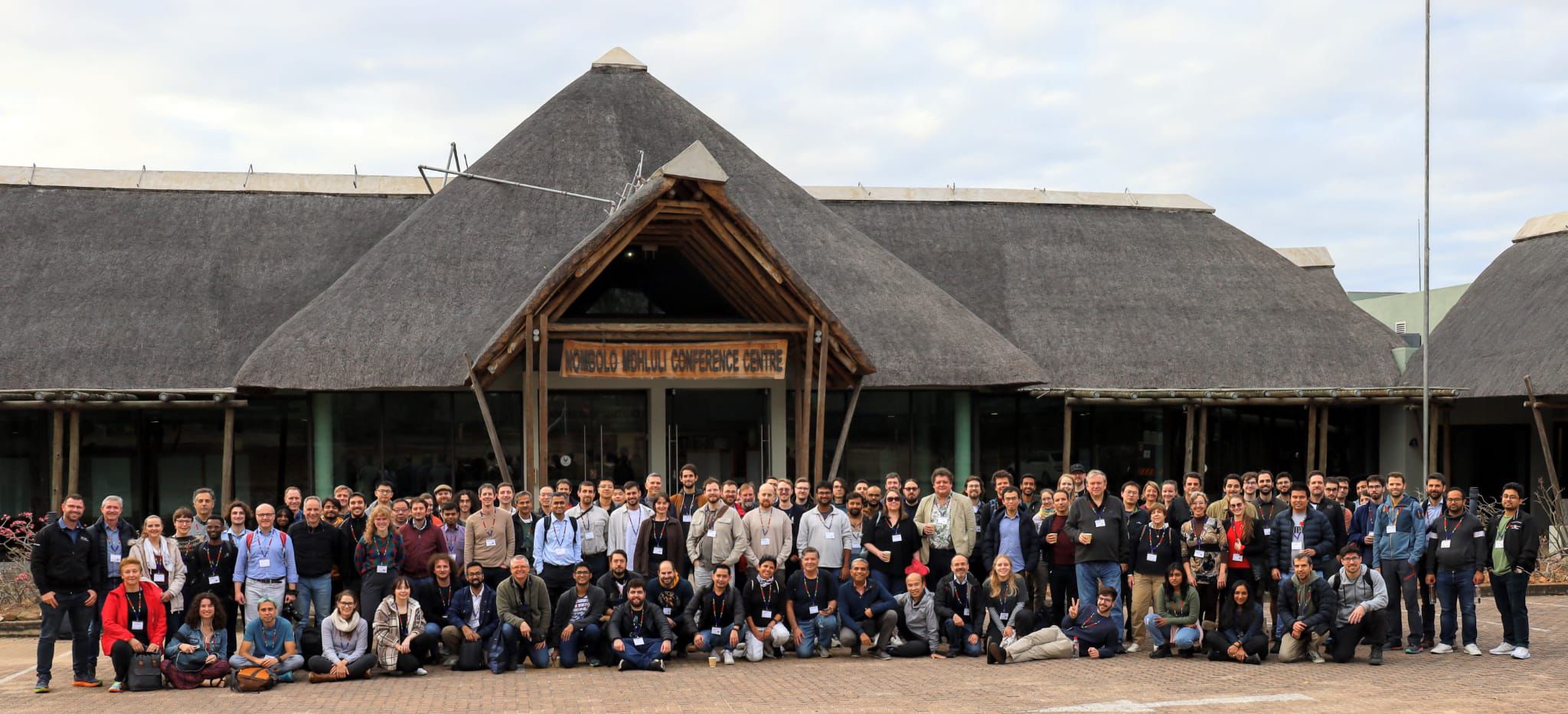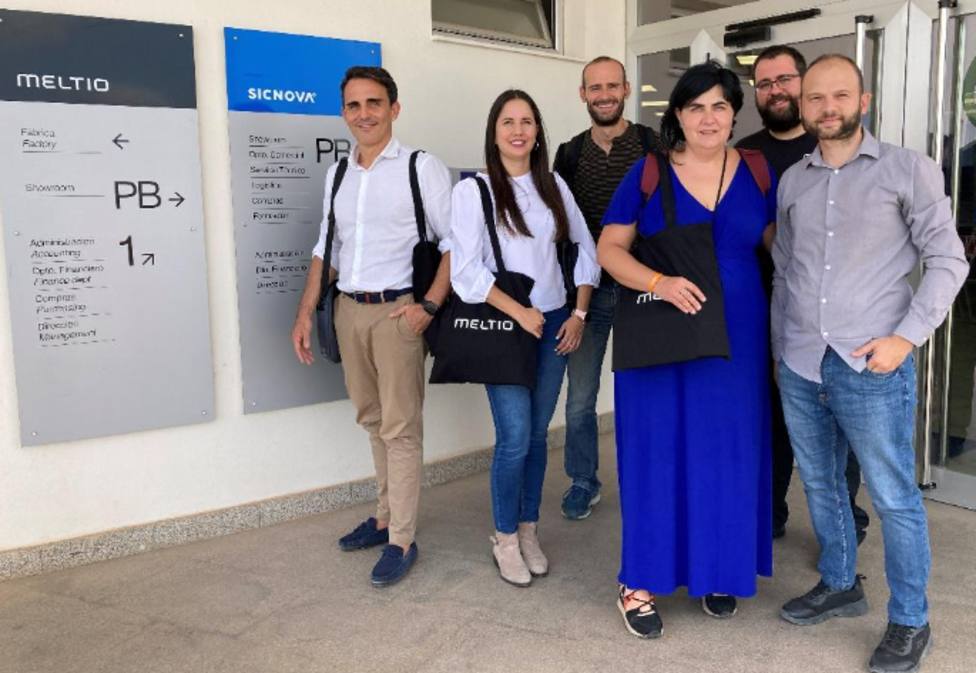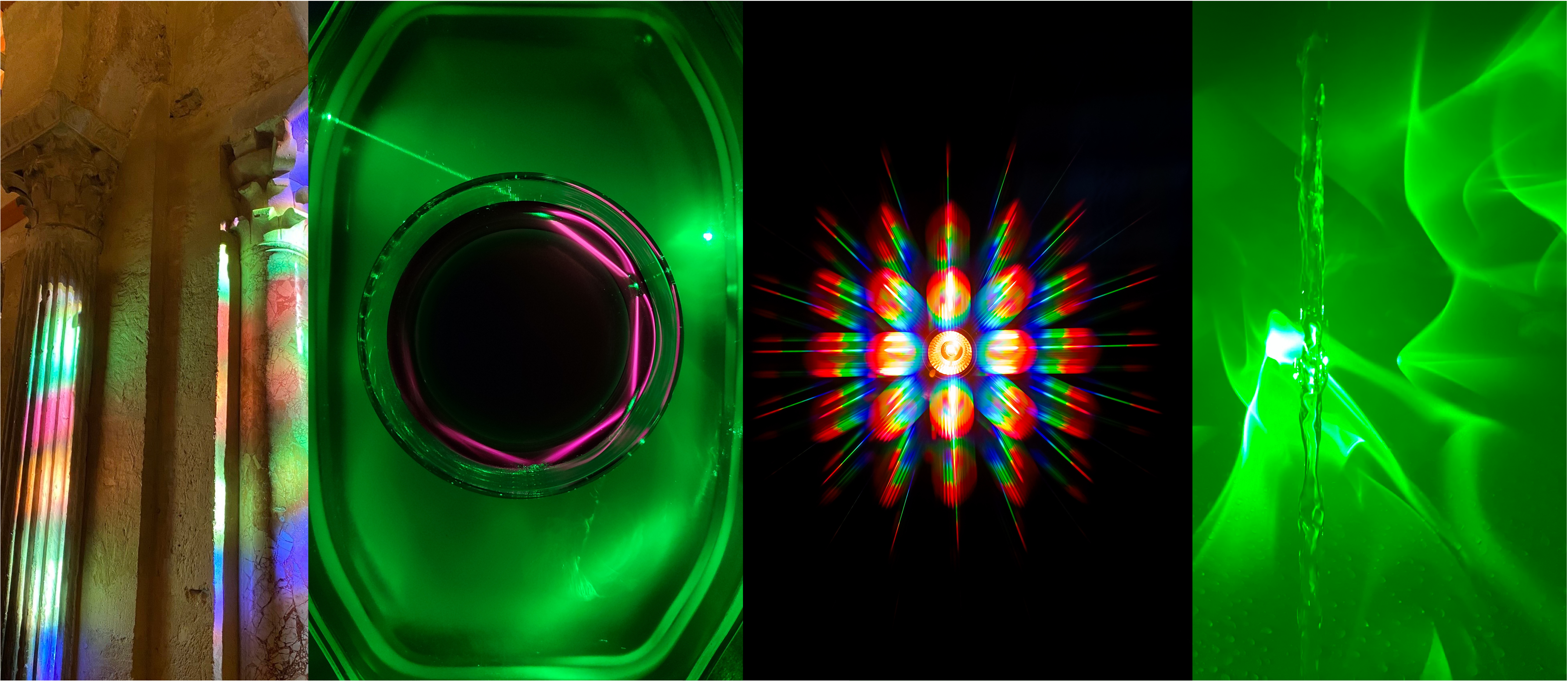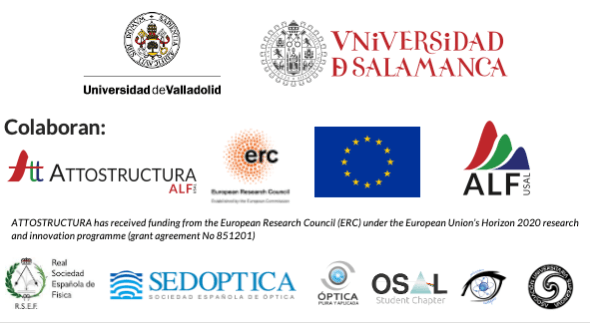We are pleased to announce the defense of the doctoral thesis of Ana García Cabrera, titled “Efectos de las simetrías del cristal en la generación de armónicos altos en grafeno.” The defense will take place on Monday, July 29th, at 11:00 in Aula III of the Edificio Trilingüe. The thesis directors are Dr. Luis Plaja Rustein and Dr. Carlos Hernández García.
We cordially invite you to attend this important presentation, as your presence and support will be greatly appreciated.

